Álvaro
Pessôa, orchidist since 1976, is a lawyer and lives in Rio de
Janeiro city where he has his office. He keeps his collection and
commercial greenhouse in Teresópolis, where he cultivates successfully
Vanda, Ascocentrum and Ascocenda and the Miltoniopsis
in the same greenhouse to astonishment of people who think it is impossible
to grow so different groups in the same room and under the same conditions.
Talkative, smart, amusing, brave he always says what he thinks, owner
of uncommon verve and sense of humor, in his lectures, he can speak
about orchids without showing picture and keep the audience absolutely
attentive.
Considered an excellent grower, as hybridizer he has among his registers,
Lc Jorge Sampaio, a masterpiece. He has been producing small
plant as well plants including Brazilian Miltonia in order
to make them more tolerate to hot climate.
In this interview, he tells us a little about the history of hybridization
in Brazil and also about his experience. |
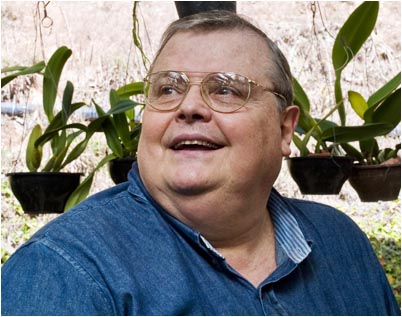 photo:Sergio
Araujo
photo:Sergio
Araujo |
ON:
Álvaro, we would like to approach the history of the hybridization
and improvement of species in Brazil, since de beginning. You
were and still is, at the same time, the agent and the witness
in part of this history, what could you tell us?
AP: About the history of the hybridization in Brazil can tell
part of it. People should know that this history has two period:
before and after Rolf Altenburg.
During the decades of the 1950's and 1960's when practically the
meristem didn't exist, the Floralia's catalogues already offered
fantasy hybrids and aquinii such as C. mossiae alba x
C. intermedia aquinii, Cattleya bicolor x C. intermedia
aquinii, C. Bob Betts x C. intermedia aquinii.
It happened when the world orchidist didn't dream with forms like
aquinii, spotted, stained, peloric. It only happened 20 years
after Rolf offer them in a pioneer way, in Brazil.
ON: Those catalogue are, in fact, the true history of
the crossings he had done, since he created Florália during
the l954's at
the beginning of the 1960's and when he
founded the laboratory. Those catalogues are well known, even
nowadays however the creator remains still unknown as well as
the way he worked. Who really was Rolf?
AP: The owner of the absolute knowledge of Cattleya hybridization.
One of his masterpiece is Lc José Dias de Castro,
crossing of Cattleya labiata x Lc Sam W. Soyza.
Still nowadays, Rolf's hybrids are considered impeccable: Lc
João Antonio Nicoli, Lc Kunta Kinté, Lc
Raimundo Mesquita, C Sonia Altenburg, Blc Capitão
Pessoa, Blc Cecília Pessoa.
He has been an orchidist who always worked in laboratory and,
at the beginning, he wasn't involved with the production of species.
Instead of producing Laelia purpurata, tenebrosa, lobata,
he sold them. I
knew his nurseries in Petrópolis completely filled with
hybrids. He didn't love species.
Only after seeing Binot getting money with species,
he started his own production and then he had many displeasures
with this. People who bought him plants, asked to keep
it in secret on order to ride them in the wood and later "collected".
No one has nowadays, what Florália had those days. When
you see those old catalogues, without pictures, just big catalogues,
there were 200 items to tell the history. You notice that the
production was a serious business. You saw Dendrobiums made by
Rolf, in my place, that you even know he had done.
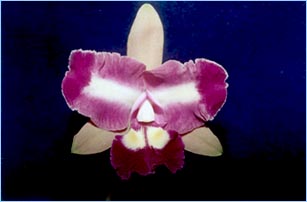 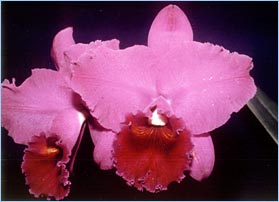
Blc Cecília
Pessôa 'Star Eyes' Lc.
Raimundo Mesquita
ON: And what about all
this knowledge, is there a registration?
AP: No. We wanted him to do the same thing like Ernest Hetherington,
an American patriarch, did in the AOS Bulletin. He wrote 12 articles
about the evolution of the Cattleya group. For example,
he demonstrated that all those big alba Cattleyas that many people
think include Brassavola, in fact don't have. They are
pure Cattleya, I mean Irmã Dulce is only Cattleya.
All that generation - Bow Bells, Bob Betts - are an evolution
of Cattleya mainly generated from C. trianaei.
Then he wrote about yellow Cattleya with red lip, about
the influence of Cattleya dowiana, Cattleya dowiana
var aurea, Sophronitis, Cattleya aurantiaca
etc.
Sandra Odebrecht and I tried every thing to make him talk. I told
her: - Go ahead, Sandra, you are his granddaughter, talking from
grandfather to granddaughter
is much more intimate than include a foreigner. She tried,
she really tried but without success! I have ask him to talk about
but he answered: - "Ah! doctor, I don't feel well speaking".
I replied: - "Rolf, talk to the recorder", - "Ah!
it is worth", he answered.
It would be a rudeness recorder our conversation without his authorization.
ON: Why he didn't want to have the conversation recorded?
Wasn't him conscious about his knowledge, about the importance
of his work, brief, about his importance?
AP: He was a very special man in face of the technology. For instance,
I belong to a category of 66
years old people who think the more you learn the more
you take time to die. So, I insist on learning computer, not only
to make my life easy but also to make my intelligence nimble,
I use I-pod, I think all those things sensational. Who live more,
will see wonderful things. I think we can not lose this jump but
it is big the number of people that think that computer bite,s
this kind of things.
Rolf didn't love technology! He was a very traditional, he didn't
get in those things. Thus, he died and brought with him extraordinary
knowledge. His experience in hybridization will stay hidden by
his undisguised modesty and timidity. However three people benefit
from this knowledge and one of them, seized the opportunity.
ON: Who?
AP: Sergio
Barani who is a great hybridizer
is the person who most knew to take advantages of Rolf 's knowledge.
I should say that, among those I
knew in Brazil, Barani is the one who produce the most incredible
hybrids. He came to Florália and stayed with Rolf all Saturdays
and Mondays until got what he had to teach. A month later, he
returned.
ON: You were very close to him, how was him?
AP: Rolf was absolutely ethical, he didn't do a trickery, he didn't
sell a wrong plant, he was extremely serious and was very emotional.
Every body has crises of bad temper, but he had terrible crises.
During those crises, he
was scolding somebody even those who deeply loved him (and
vice versa), got out discretely, took the car and went away.
There are something that displeased him. He got angry with the
Japanese who came from São Paulo to steal plants from his
nurseries. He considered it an unforgivable thing, a treacherousness.
A Japanese group stole his beloved Miltonia, Wilsonara,
Aliceara, Burrageara he had imported from Germany.
It happened 35 years ago and those plants had the same pattern
existing today. He haven't every thing we have today but what
he had (which still blooms) is so good as those plants imported
today.
ON: What is this story you mentioned about placing plants
in the wood that bothered so much?
AP: Rolf found it an absurd. Can you believe that in the Brazilian
show it was forbidden to judge species from sowing? It means,
the Brazilian species obtained by artificial means. I have seen
it. Plants to be judged should come from the wood.
Rolf picked a quarrel very well and that was the reason to fight
against people from Rio Grande do Sul. The guys bought his seedlings
of purpurata, placed them on the trees, in the wood to get old
so they could say that they were collected. They left the plants
got all characteristic of lichen over the leaves, then they cut
the plants and brought to the show. So they could compete but
in fact, they were Rolf's seedlings.
Well, talking about hybridizing in Brazil finishes for talking
about Rolf.
ON: By this time, except for Mr. Rolf, there was more
production of species than the hybrids?
AP: The Brazilian orchidophilia, reflecting the world-wide, was
not only concentrated in species but also in varieties of species
and, inside them, mainly alba plants. That is why the hybridizers
and, in a special Rolf Altenburg tried to produce, from crossing
and self fecundation, alba species and hybrids. The problem to
get alba is that the alba form of the species is covered by some
genetic characteristic of dominance and recessiveness Some albino
clones are confirmed dominant and when self fecundated, produce
albino progenies. That is what occur with C. labiata alba
'Angerer', for example. When an alba plant is genetically
recessive, in self fecundation as well as in crossing, it produces,
in general, colored progenies. More, this tendency is accentuated
because the elements missing in the chromosomal order of the plant
(and make them albino) have a high probability of being filled
by the other. Thus, the often frustration when we cross two alba
and get (without knowing the reason) colored products. The same
thing occurs with two coeruleas or two semi alba. We knew very
little about genetic, chromosomes, color dominance, false alba,
compatibility of dimension of the flowers to cross, the impossibility
of some color to dominant such as the red over the yellow but
Rolf was 50 years ahead. He did everything, things that we have
never dreamed. For example, he got from self fecundation of Laelia
perrini, alba, semi alba, carnea, coeruela plants. In perrini
worked well.
ON: Is it possible to establish a parallel between the
hybridizers or those who improved the species by this time?
AP: In the south region, Dr. Walter Haetinger was excellent to
improve species. He did an wonderful work with L. purpurata
and C. intermedia, he was the responsible for the
best in Rio Grande do Sul. He only worked with these two species.
He did everything with Cattleya intermedia aquinii, I
saw alba, blue, cherry, every thing. He made purpurata blooming
with petals almost as wide as Cattleya labiata's and
with good form. I saw it. You go on crossing only the
best, you improve the species in a level that it wouldn't get
in the nature. He was, I should say, the pioneer, the precursor,
the biggest and the most respectable in the south region.
I would say that, as the same in the art, there is always a pioneer.
As a matter of fact, I like a Picasso's sentence: "life is
divided between plagiarists and revolutionaries". A guy who
gets there and does 'Les Demoiselles d'Avignon'... People like
him start things. There is always someone who did first, this
guy is the one, after him everyone does. People from Rio Grande
do Sul were those who resisted most to the idea of sowing and
improvement of species because in fact, they wanted to have the
monopoly, I mean to have and to keep it.
In the small circle of labiatas and purpuratas, you don't get
in if you don't know someone. It is useless to have money, in
fact, you should have a little, you should have some friendship
and show that you have future, it means, you are the kind of orchidist
who go often to Ceará, Alagoas, Pernambuco, where the labiatas
live. Then you are looked in a different away but it is only for
exchange. The fatal commitment was not to meristem because people
wanted to keep the monopoly but Haetinger didn't do this.
The mood of people in the orchids world was very competitive and
based on tribes relationships, at
least, in 1977, when
I got in.
The Rio Grande do Sul tribes had as a great personality in the
improvement of species, Walter Haettinger. It was him who got
intermedia alba aquinii, violet in the alba, cherry in alba besides
producing aquinii, flamea, alba in Laelia purpurata,
all perfect for those times!!!
However, everything he produced, stayed in the South. It didn't
go to Minas Gerais and Rio de Janeiro tribes neither to São
Paulo. People from Rio Grande do Sul "pinched" the sowings from
São Paulo but the contrary wasn't always true. Except in
case of great friendships !
The Japanese worked as colony. What was good, stayed in the colony.
Selling only those which were commercial. If you insisted, they
would say: " colony consumes every thing."
Still in the south region, there were Aldomar Sander and Sergio
Englert with the improvement of Cattleya intermedia.
ON: Besides this circle, who could you still name?
AP: The improvement of species, in general, revealed, in the seventy
decade, talents mainly in São Paulo. First, the Superior
College of Agriculture a Luiz de Queiroz (ESALQ), in Piracicaba,
with Professor Hamilton Bicalho, São Carlos, Rio Claro,
Americana and some other cities became the center of improvements
of species. Amândio Pinho Caetano crossed many varieties
of labiata such Cattleya labiata 'Maria Odete' x C.
labiata 'Marina', worked also with Cattleya intermedia
as well as César Wenzel. Still in labiata, we had
Sander, Sumio Nakashima, João Paulo Fontes and Wladislaw
Zaslawski.
ON: What could you tell about the history of the improvement
in Cattleya loddigesii?
AP: Adhemar Manarini was
probably who looked for a bigger range of colors in Cattleya
loddigesii, selecting special clones of striate, punctata,
puntatíssima, dark form. But the Japanese
descendent colony, in São
Paulo, else got strongly in this market specially with a loddigesii.
Harusi Iwasita, from Cotia, obtained plants absolute perfects
and white as snow using two plants obtained by the improvement
of Cattleya loddigesii alba. Sebastião Nagase
developed dar clones in the searching of lighter colors. He else
worked with L. pumila, as well Nagkashima who improved
both. In the south, Aldomar Sander (South) and Siegwald Odebrecht
in Rio de Janeiro got excellent results in terms of light color,
by self fecundating C. loddigesii 'Martinelli'.
ON: Who else?
AP: In Campinas, some people worked with Sophronitis,
Max Wunsche, for example. He did a lot of thing concerning the
hybrids of sophronitis, but he registered a little. He
created Sc Campinas from Sophronitis coccinea
and re-crossed many times getting wonderful results in color.
He paid homage to Aniel Carnier with a fantastic plant
but he didn't register anything.
ON: And those people from Campinas you have mentioned?
AP: Besides Max, we had Ari who did many good things. I should
talk about two very important peoples. The first is Waldemar Silva
who wrote a book called 'Cultivo de Orquídeas no Brasil'.
The book is an enormous disorganization but if you read it many
times, you will learn a lot of thing. He is talking about Laelia,
and, suddenly, he talked about Oncidium lanceanum, about
altitude.
ON: Waldemar Silva (Orquidário Brasil) and Mr.
Rolf were the only hybridizers by this time. He had registered
more than 100 hybrids but he did many which were not registered.
And the second person you mentioned?
AP: I don't know if you have already heard about an important
person called Denis Duveen. He was a deep and very studious person.
He wrote a book about Lavoisier, the one who announced the nature
principle where nothing is lost, everything is transformed. Lavoisier
is more important than that. He discovered the combustion. Backing
to Duveen, he was very interested in Brazilian species. Besides
to be Waldemar Silva partner, he encourage him to work with crosses,
mainly with C.trianaei.
ON: Any one more?
AP: In Espírito Santo, Érico de Freitas Machado
improved C. warneri, sowing by Adhemar Manarini. Jorge
Verboonen worked with self fecundation in the 70's decade.
Well, I can't remember if someone in Minas Gerais worked with
hybridization, it is possible but I don't know. José Antonio
Nicoli bought a lot from Mr. Rolf. The group from Belo Horizonte
was very strong but they were fascinated by warneri and walkeriana.
They didn't almost nothing but warneri and walkeriana. People
from northern don't seem to have done many things in hybridization.
ON: Which was the orientation to do hybrids?
AP: We should talk about the influence of foreign plants, C.
mendelii, C. chocoensis, C. trianaei, C.
percivaliana, because in the decades from 50 to 70's, the
hybridizations were based in foreign plants and mainly in the
search of big flowers preferably lilac, alba and semi alba.
Outstanding hybrids were produced with Cattleya trianaei:
Lc Waldemar Silva, Bc Pastoral and many clones.
With trianaei and mossiae - Lc Turandot. With Cattleya mossiae
and Cattleya warscewiczii - Lc Sonia Altemburg
and Blc Captain Pessoa. With dowiana and trianaei, Blc
Roberto Cardoso. But there were crossings with Brazilian
species. The Lc José Dias de Castro, mainly labiata
but also percivaliana and dowiana. Lc João Antonio
Nicoli more labiata but also dowiana and warscewiczii. Noboru
Suzuki crossed Sophronitis coccinea with Lc
José Dias de Castro to obtain Slc Suzuki, one
the most beautiful purple of this period.
ON: Lc José Dias de Castro which had already
more than registered 200, paid homage to a mecenas. Who were the
mecenas of the orchid world in Brazil?
AP: We had two mecenas: José Dias de Castro who exported
coffee, very rich and one of the biggest Rolf's friend and Dr.
Guilherme Guinle.
ON: When people started to work in order to reduce plants
size?
AP: With the oil crises and the high price of the energy, we should
reduce the plants size. At the beginning of the 80 decade, the
Japanese worked with small Brazilian species mainly Sophronitis,
Laelia pumila, Cattleya walkeriana, Laelia crispata,
L. milleri, L. briegeri and C. intermedia aquinii were
abundantly used. C. Interglossa (C. intermedia aquinii
x C. amethystoglossa) dated from this period and
the reproduction of hybrid from the beginning of the century,
Sc Batemanniana (C. intermedia aquinii x Sophronitis
coccinea). Lc Tropical Pointer. In USA, Slc
Haezel Boyd has been created. Outside the Japanese colony, in
Brazil, this tendency was basically followed by two hybridizers:
Maurício Verbonen (Binot nurseries) and Adhemar Manarini.
Maurício reproduce again the C. Peckaviensis (C.
schilleriana x Cattleya acklandiae) and intensely
crossed rupicolous Laelia, Cattleyas fantasy, Epidendrum,
Sophronitis.
ON: And the meristem?
AP: One day, at about 1950, the meristem appeared and every body
did it, people did 50 meristems and killed the rest of the cells
in order to keep the monopoly.
ON: How did it start in Brazil? Did Mr. Rolf also do meristem?
AP: Yes, mainly hybrids but they didn't have value abroad. He
flooded the market with meristem of hybrids and no one complained.
But, Sandra, personally, succeeded in doing a meristem from 'Emília'
which was an unique labiata with big petals and it was a "God
helps us" and Rolf was seriously insulted. But the person
who seriously got into meristem was Ademar Manarinni, from Equipesca.
He was a brilliant Italian.
I liked him very much and were his lawyer for five years.
ON: Which period are you talking about?
AP: I am talking about 1985/l990.
ON: Back to Manarini ...
AP: At about 1990, he
had Equipesca, where he manufactured products for fishing
and there was a line of buoy to hold fish net. One day, he discovered
that, in a certain line of production, no buoy perforated or had
an imperfection. We should say that in other lines, there were
20% of defect, but one of them, 0%. He wondered why. Thus he discovered
Sebastiana in this line of production. She was small and had delicate
hands.
What Manarini has done?
There was his geniality. He asked Sebastiana to do meristem and
insure her hands.
He founded Equilab and started to buy species to do clone. Those
who sold him the good species to do meristem were considered as
traitor. He got inside the most sensible area of the collectors
of species: Laelia purpurata, Cattleya labiata e
intermedia. When he succeeded to meristem 'Feiticeira',
the country almost fell down. He got, in Brazil, things that no
one had. He sold cheap plants with very high patterns. There was
a new concept: Hybrids of high quality, selected rare species
and meristemed, small plants and incontrovertible good taste.
When he put the first list to sell, offering those patterns, there
were L .purpurata 'Milionária', C. loddigesii
from Martinelli. It was a "God help us".
ON: Of course. The collectors had unique plants and suddenly,
every one could have a plant like his.
AP: Until the end of the 60's, the great collectors bought very
expensive orchids and exchanged among them, in a way that powerful
orchidists were a special lineage. To them, the others stayed
in second level.
Manarini told me: - ' Álvaro, they are ignorant, this orchidophilia
will finish. This silliness I have, you haven't, if you have,
the other one doesn't want to have, if you give to someone, you
are not in my team, your business is with me not with the other.
All those thing will be over'. Manarini was the first person to
tell me this. Even in USA, it finished. Collectors like this finished
in all around the world. This kind of monopoly is useless when
concerns alive collection. In this way you can collect cameras,
watches, stamps because even an art object will always evolve.
Every one wanted to be in this foolish thing of exchange labiata
and purpurata. - "I have one that you don't have, I have
aquinii I, aquinii II, I don't know what else ... "
ON: Besides Rolf and Manarini?
AP: When Rolf was doing meristem, Sebastião Nagase also
did it in São Paulo. As I said, he developed dark clones
of Cattleya loddigesii and Laelia pumila. He
became worldwide known by his dendrobiums.
ON: And before those people, we could say that there wasn't
hybridization in Brazil?
AP: You can't say that there wasn't hybridization before all those
things. It was incipient but there was.
Mr. Jorge Verboonen told me when he started to work the Binot
nurseries, all sowing were done by people threw the seed over
the roots in the pots. No one had laboratory nor was modernized
. For example, I found up in Pernambuco a way to make labiata
sprout, I think you have never heard about. Do you know those
drills to do a hole on the wall when they are well sharpened and
new? If you take the end of the rhizome, where there is a leaf
and do a hole in cross, the sprout wakes up. So even meristem
was done. I was tired of seeing in Pernambuco plants with many
small tails behind. The owner had made it to sprout with the drill.
Can you say that in Pernambuco people didn't do meristem?
They did. In a rudimental way but they did.
ON: And after this first phase? Was there much more importation?
AP: Sumio Nakashima, in São Bernardo, started to bring
Japanese meristems, in spite of being the pioneer to bring Cymbidium
clones to Brazil, he was, at the same time, the man who hold
up more the
improvement of the culture of this genus. With the knowledge he
had, he went to Japan and brought the cheapest meristems. Nothing
but reject, every thing the Japanese didn't want, Nakashima brought.
I bought some thing, I made a mistake in 10, 30 plants but the
Japanese colony bought 500.000. There are meristems from this
time that have never bloomed because the guy didn't know how to
take off the meristematic mass. So the plant grow but doesn't
bloom.
Then, they started to important good Phalaenopsis and
Cymbidium.
I don't know if you have the idea of the size of Amândio
Pinho Caetano's nurseries, in Cotia, they are about 48.000 m2.
Plenty of plants. Amândio imported Oncidium Sherry
Baby in great quantity. He sold everything! He says that it is
the plant he most won money in Brazil. But his cultivation is
very good. He also started to do meristem again, an excellent
hybridizer that finished for doing meristem.
The last new: the guy take a plant and does, for example, 5.000
plants. When they got a certain size, he sells the monopoly. It
means, the guy doesn't sell the seeds, he sells copy of plant.
It started eight years ago. I don't know very much because since
the 15th WOC, I just help in small things, I haven't go to Rio
Claro or to Guaxupé, etc any more.
ON: Why did you keep away since the 15th WOC? Why 96 was
a limit?
AP: The international show was an anti-climax.
It happened and Gouveia said it a lot. There was the show and
every thing seemed to finish. I started to stay away for two reasons:
In 92, 93, I had left the former lawyer office where I started
and stayed for 30 years and open this one (there was nothing with
orchids). So, I had no more time to go the shows in the interior
of the country. That could be the main reason. The second is because
I realized that Manarini was right. I mean, I thought that we
would not have more big collectors. For that I saw in Rio de Janeiro,
I didn't believe that people had purchasing power to have good
collections. And this turn into to be true.
|
|
ON:
And what were you looking for?
AP: In hybridization? My son and I started to attend a niche that
I thought existed, to rent plants to restaurants. So we need small
and multiflora plants for every season to decorate the tables in
the restaurants. During three years it worked well however the "cariocas"
(*) became poor.
The good restaurants went bankrupt, many restaurants in Rio closed
the doors. What is coming in the place of the restaurant? The cheap
bars where you have a talk, drink bear, amuse your self and spend
20 or 30 Reais (Brazilian money).
If you go to the restaurant, it will cost three times more.
|
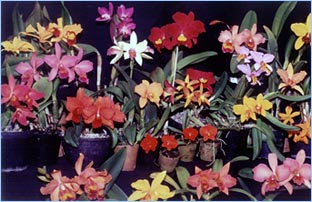
Mini Cattleyas |
|
In hybridization, I say again, I did a little more than those people
who do cavity in back pseudobulbs.
My proposition was completely different, I was looking for a business
that I could run. I work low profile.
Among those things I did, some of them worked well, some didn't,
it was a backfire, like this history about Marcelo's plant I have
mentioned when I lost a matrix.
I tried to cross things against Rolf's advice. - 'Doctor Álvaro,
I don't start with Brassavola, no way. I don't
want to see Brassavola. Cattleya rex,
it is useless. If you do this, it will take 28 years', he used to
say.
He was very clear about those things. Each time you make a mistake,
it will take seven years. Sometimes, you get, at least, a good thing
to go ahead but it will take 7 years more. The plant is not good
but it has potential to get what you want. That is what we call
a good step to jump over.
I did many things which were a rubbish. You don't' make a mistake
only if you don't try, only the theorist.
ON: And
what else?
Well, I did the primary cross C. Brazilian Middway (C.
harrisoniana x C. loddigesii). I
also look for wine tonalities.
|
ON:
What did you do to get your aim:
plants with different blooming seasons? .
Yes. For example, hybrids with C. guttata and C.
leopoldii cover the period between November/December until
February/March. Not all are brilliant but not all have already
flowered. And there also are the hybrids with L. purpurata,
L. lobata and L. tenebrosa.
L. Zip ( L. tenebrosa x L. milleri)
was a success of beauty and selling. Plants with bunches and strong
and tough spikes.
A show!
L. purpurata doesn't withstand the
'jolt'. The rupicolous species provoke a reduction in huge purpuratas.
L. tenebrosa withstands better the 'jolt' of the rupicolous.
|
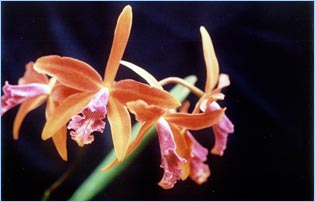
Laelia tenebrosa x Laelia milleri (L. Zip) |
ON:
And what are you looking for with Miltonia's crossings (just the Brazilian
ones), it means really Miltonia (not Miltoniopsis)?
AP: I prepared crosses to bloom in warmer climate and between mars
and April. |
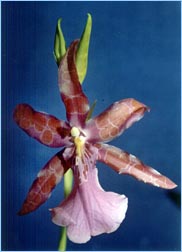
Miltonia spectabilis x Miltassia Aztec |
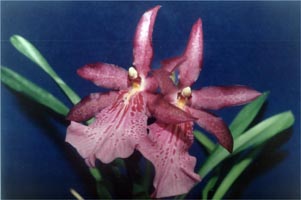
Miltonia
spectabilis 'Gigante' x Miltassia Aztec |
|
ON: Let 's talk about great things you have done?
AP: I don't do great things.
I was lucky with some crossings I did, Lc Jorge Sampaio,
for example, is a good plant.
Many people looked for what to do with
Lc Kunta Kinté (one of the darker plants) and crossed
it with many things. I had the idea to cross it with Lc
Raimundo Mesquita which is a wonderful plant with beautiful flowers
(Kunta Kinté x Orange Gem). The result is Laeliocattleya
Jorge Sampaio with marvelous purple.
This is really good. It has Kunta Kinté twice. I still have
the matrices so I could do it again.
|
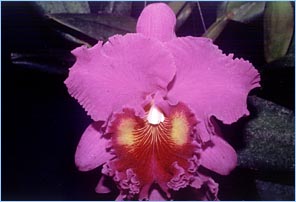 Lc Jorge Sampaio
Lc Jorge Sampaio |
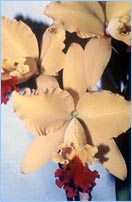
Blc Brazilian
Juliana
|
Another
plant obtained by the crossing of a plant by Aniel Carnier (a plant
in branch) that worked well and I gave my daughter in law's name:
Blc Brazilian Juliana (Lc Orange Gem x Blc
Castle in Flames)
|
|
ON:
You told that you didn't done great things, however you have obtained
excellent results doing genetic improvements with the 'loddigesii'.
AP: In fact, I was working from what Manarini had done. He had already
gathered the cream of the cream in loddigesii in São Paulo.
When he passed away, I bought 30, 40 plants of each cross he had
done and started to work from them. In this way, no one started
from the wild plant, neither in São Paulo nor Rio Grande
do Sul, they started over a work done for 30 years by a German genius
called Dr. Walter Haetinger.
|
|
ON:
How have you done this work?
AP: I tried to organize a system to identify the flowers because
the quantity of varieties obtained was really great. I opted to
use the name of Spanish cities. To identify punctata, punctatissima
and fantasy, I chose Andaluzia regions: 'Granada', 'Cordoba', 'Sevilha',
'Andaluzia'. For the dark forms, I chose the big cities: 'Madrid',
'Barcelona', 'Toledo', 'Bilbao', 'San Sebastian', 'Compostela''.
The light forms, I named with Spanish cities and regions with less
expression.
|
|
|
ON:
And what is the characteristic of those plants from Manarini ?
AP: Although with perfect flowers, the plants bloomed with no more
than five flowers while those from Ywasita or Nagase had eight or
nine. The solution would be to add other qualities and I tried to
increase the number of flowers. I crossed them with Nagase's plants.
To increase the floral spike, I introduced the alba from Iwasita,
however the result was the same: perfect flowers but just a few.
|
|
ON:
What is a wonderful plant when we talk about hybridization?
AP: You mean, what is an extraordinary crossing? Capitão
Pessoa is an extraordinary plant, Sonia Altenburg is
an extraordinary plant, Nobile's Belle, by Barani. He has
done many crossings where he was 80% successfully, which is great.
It is rare.
ON: What is the percentage considered a good result for
a crossing?
AP: In a crossing, 70% is already a miracle. The most part is 30%.
I am releasing a catalog with low prices because buy just one seedling
is useless unless you are really lucky. It is like to win a lottery.
You should by 10 seedlings and pray God to have something good among
them.
When we started, I mean, the group from Teresópolis: João
Paulo, Omar Júdice, me, Fernando Parga, Rolf, Alberto Lhamas,
every one had purchasing power to buy 10 seedlings.
|
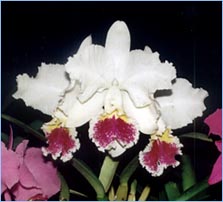
Blc.
Capitão Pessoa |
|
ON:
People invested more investment in the collection by this time?
AP: If we had invested, in 1977, in
any thing else except orchids, we would be rich at this moment.
We used to pay US$ 300,00 or US$ 400,00 for an American plant, for
a hybrid. For example, this group imported 2 bronze matrices, Lc
Fire Island and Lc Red Rooster 'Fire Cracker'. Rolf imported
orchids from all around the world. If we had bought art, we would
be rich. Of course that every thing is cheap here in Brazil, but
orchid is cheap because we had transgressed a tendency.
ON: What is the way to get a good plant?
AP: You learn how to buy. For example, in the species, you should
buy those plants which have wider leaves because as the flower is
a modified leaf, in the species wide leaf is a sign of big flower.
In some plants, there is what we use to call "small needle",
when you touch the tip of the leave, you perceive
a "small needle", a kind of "beak", the legend
says that the best flowers come from the plants which have this
"small needle".
The person who sells, knows what he is selling. When I buy seedlings,
I ask for good things, things that the grower knows are rubbish,
I don't want.
Why? Because I know what I have in my place. What is good and what
is not! Every grower says. I think that Roland Brooke is right,
people who are well established as seller should have ethics because
if you start to sell rubbish, the buyer will be frustrated and will
say that everything you do is rubbish. People are not idiot.
|
|
Some
hybrids by Álvaro Pessôa
|
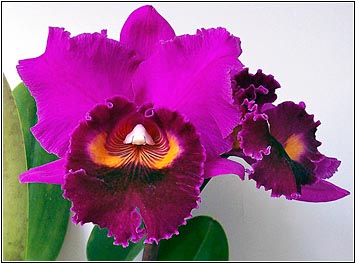 Lc.
Jorge Sampaio - photo: Raimundo Mesquita
Lc.
Jorge Sampaio - photo: Raimundo Mesquita |
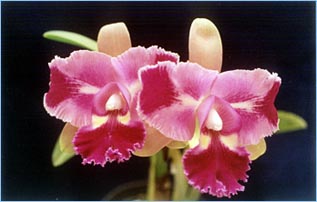
Blc Julio
Barbero x Blc Cecília Pessôa
'Star Eyes' |
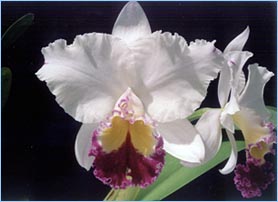
Blc Helio Wrobel |
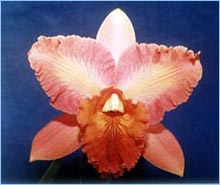
Lc Waianae
Sunset x Blc Julio Barbero |
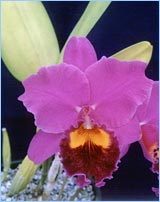 Blc. Oconee 'Mendenhall' x Lc. Kunta Kinté
Blc. Oconee 'Mendenhall' x Lc. Kunta Kinté |
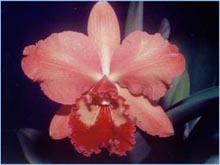 Slc Flávio
Pessoa
Slc Flávio
Pessoa |
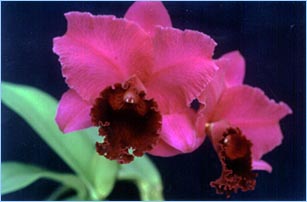 Lc Jorge Sampaio x Lc Kunta Kinté
Lc Jorge Sampaio x Lc Kunta Kinté |
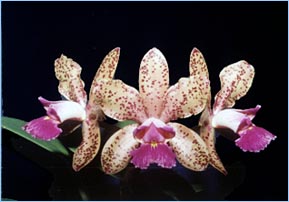 Lc Raimundo Mesquita x C. Karol Woytila
Lc Raimundo Mesquita x C. Karol Woytila |
|
|
|
|
|
Lc. Brazilian Zap
|
Slc. Marcelo
Pessoa
|
L.
lobata x L. milleri
|
| Photos: Álvaro
Pessôa
(except when indicated) |
(*)
Cariocas - people born in Rio de Janeiro city
|